The US dollar continued to fall after posting its biggest drop in three years, and the cost of hedging against further declines rose to its highest level since the start of the pandemic in early 2020 when cities were shut down.
The general weakness of the US dollar continued into Friday’s Asian trading session, after the Bloomberg Dollar Spot Index fell 1.5% in New York on Thursday. The Japanese yen rose 1% against the dollar, while the euro soared by as much as 1.6%. The traditional safe-haven currency, the Swiss franc, also appreciated.
Felix Ryan, an analyst at ANZ Bank Group in Sydney, said: “Under the uncertainty of tariffs and growing concerns over the outlook of the US economy, the performance of US assets has indeed been generally poor. So far, this has been most beneficial to European currencies (especially the euro) and safe-haven currencies.”
The option premium paid to hedge against a decline in the US dollar against a basket of currencies over the coming week has reached its highest level since March 2020 relative to the profit position. As economic concerns intensify, traders have increased their bets on further interest rate cuts by the Federal Reserve by the end of the year. The stock market plunged again after the White House announced that the US tariffs on China would be raised to 145%.
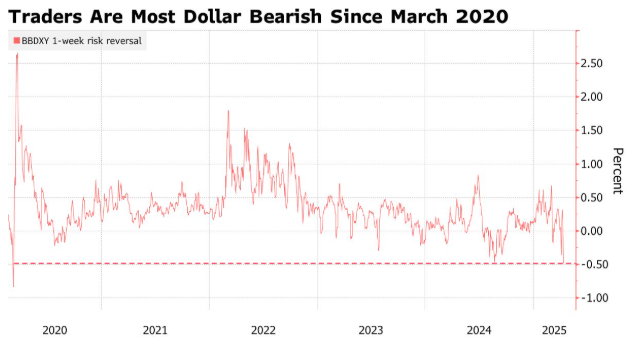
Jayati Bharadwaj, a foreign exchange strategist at TD Securities, said: “The consequences of imposing new tariffs on China have led to a renewed rush to safe-haven assets. The dollar is falling due to the decline in expectations for US economic growth, growing calls for the Federal Reserve to cut interest rates, and a general shift of funds from the US stock market to other global markets.”
Since Donald Trump returned to the White House and intermittently announced tariff policies, the foreign exchange market with a daily trading volume of up to 7.5 trillion US dollars has been in a state of tension. The US dollar index has dropped by more than 6% since it hit a peak in February and fell by about 0.3% on Friday.
On Thursday, the Swiss franc rose about 4% against the US dollar to 0.8254, marking its biggest gain since 2015 when the Swiss National Bank unexpectedly scrapped the franc’s ceiling against the euro. The Japanese yen rose more than 2% against the US dollar.
Brad Bechtel, global head of foreign exchange at Jefferies Financial Group, said: “Given the market’s uncertainty surrounding tariffs, the Swiss franc has risen due to safe-haven demand. Most asset management companies use the Swiss franc and the Japanese yen as alternatives for risk hedging.”
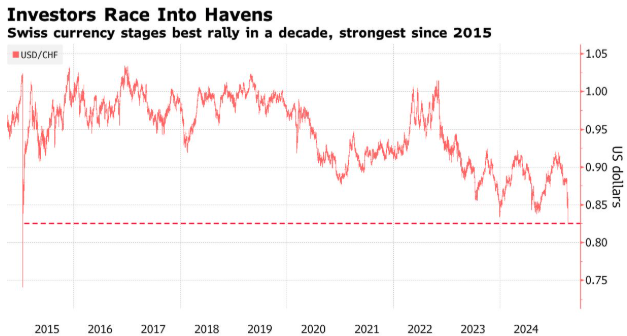
The deputy governor of the Bank of England, Sarah Breeden, said that policymakers are monitoring potential signs of a weakening pound to understand how to respond to US President Donald Trump’s trade war.
Braden warned that tariffs would hit UK economic growth. Although the potential impact on inflation is still unclear, she pointed out that the exchange rate is the “key determining factor”.
Briden said at an online conference hosted by the news agency MNI: “I think it’s very important to understand the outlook for exchange rates. This is also full of uncertainties and will largely depend on the decisions of other countries to impose retaliatory tariffs, the evolution of global risk sentiment and broader financial market developments.”
As policymakers remain concerned about persistent price pressures, the Bank of England has so far been cautious about cutting interest rates. However, the recent global market turmoil following Trump’s announcement of global tariffs has led traders to expect that the Bank of England will further cut interest rates significantly.
The depreciation of the pound could lead to higher prices for imported goods in the UK, thereby intensifying price pressures. Bridgen added that this has not happened yet, but “the situation could change”.
Technical analysis:
Gold: After a slight dip to the 3100 mark yesterday, the price randomly rebounded and rose, returning to the upward trend. The two buy orders we placed below did not get executed. On Friday, we need to be cautious of a manipulated downward pressure on the price, especially after the opening of the North American market. We suggest maintaining a low-buy strategy and waiting until next week to increase the buying volume. For detailed positions, please consult the plugin.
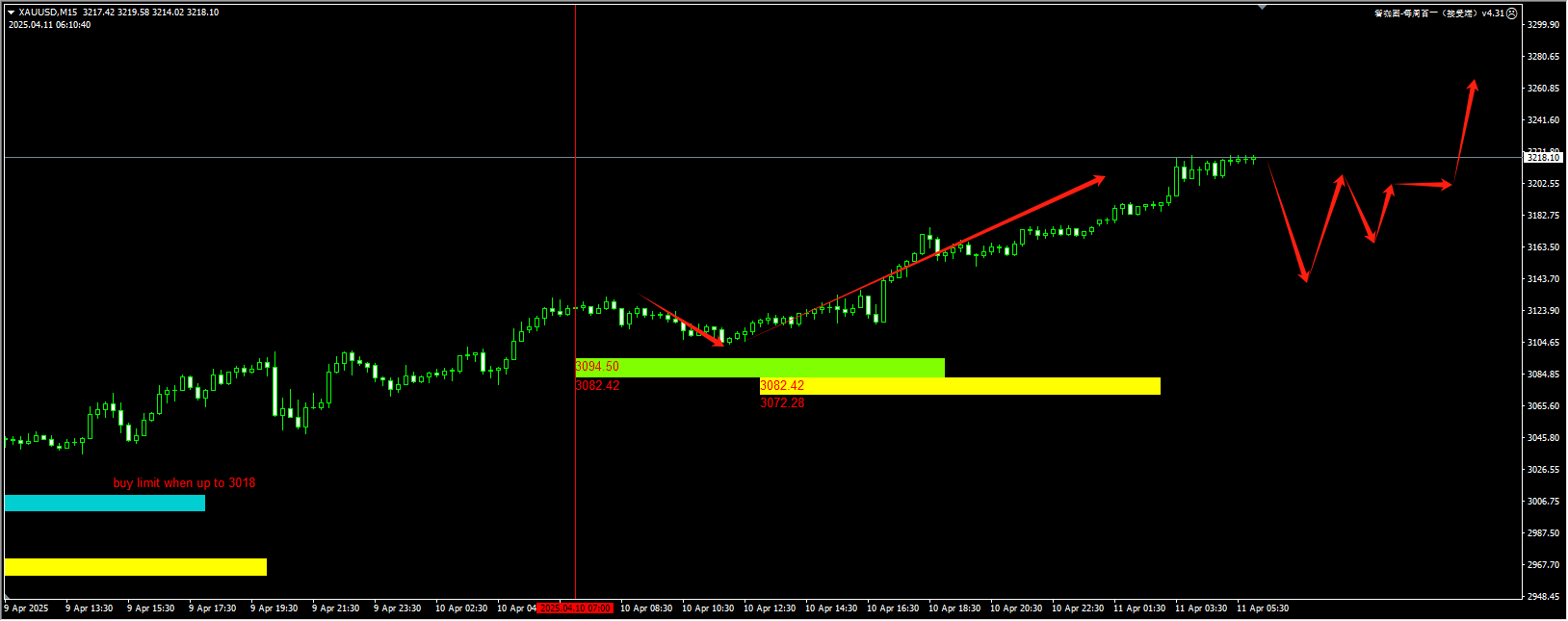
(Gold 15-minute chart)
The plugin is updated from 12:00 to 13:00 every trading day. If you want to experience the same plugin as shown in the chart, please contact V: Hana-fgfg.
The Nasdaq: After the price refreshed the liquidity in the yellow zone overnight, it rebounded as we expected. However, it still shows a convergent and oscillating pattern at present. Within the day, we should prioritize the trading signal of the momentum breaking through. For detailed positions, please consult the plugin.
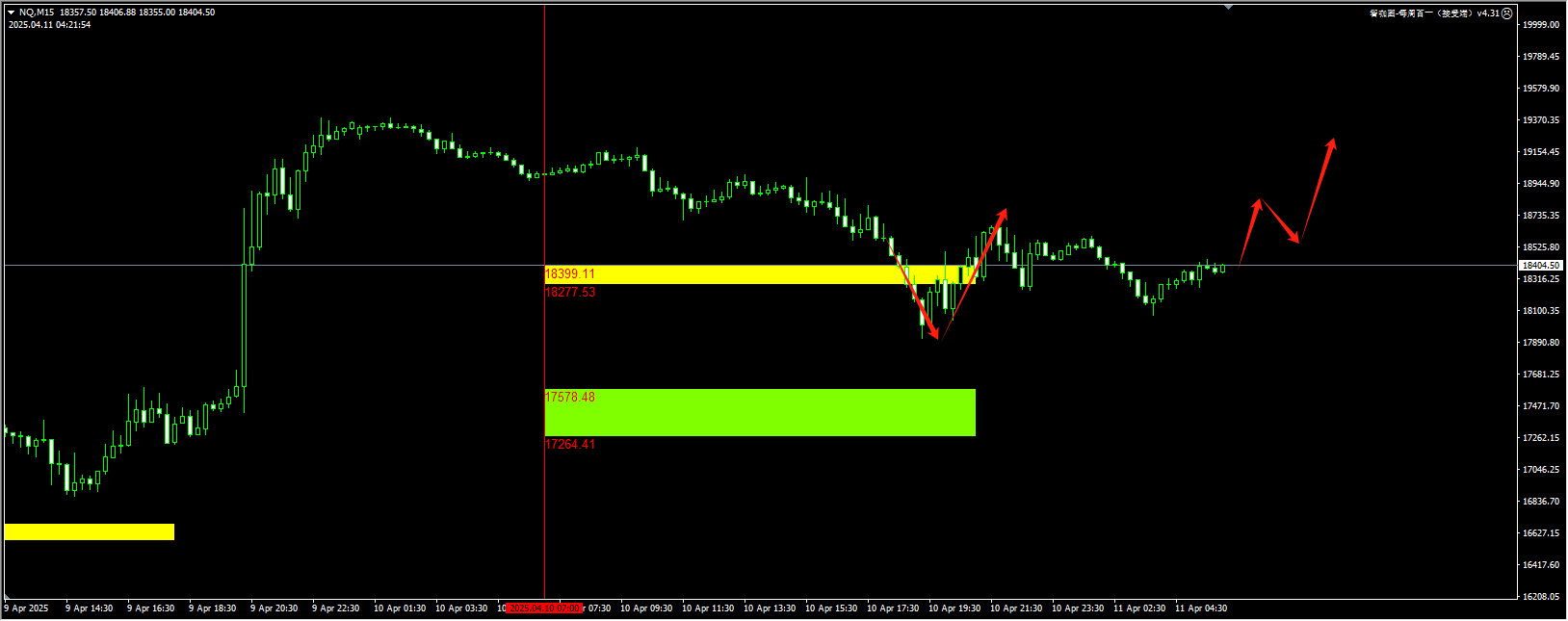
(NASDAQ 15-minute chart)
The plugin is updated from 12:00 to 13:00 every trading day. If you want to experience the same plugin as shown in the chart, please contact V: Hana-fgfg.
Crude oil: As Trump has postponed the full reciprocal tariffs for 90 days, the pressure on oil prices from recession concerns has been greatly alleviated. We suggest resuming the operation guideline of buying at low prices. The overnight price cleared the liquidity in the yellow area. Today, we should pay attention to the buying opportunity in the new demand zone left after the momentum breaks through. For detailed positions, please consult the plugin.
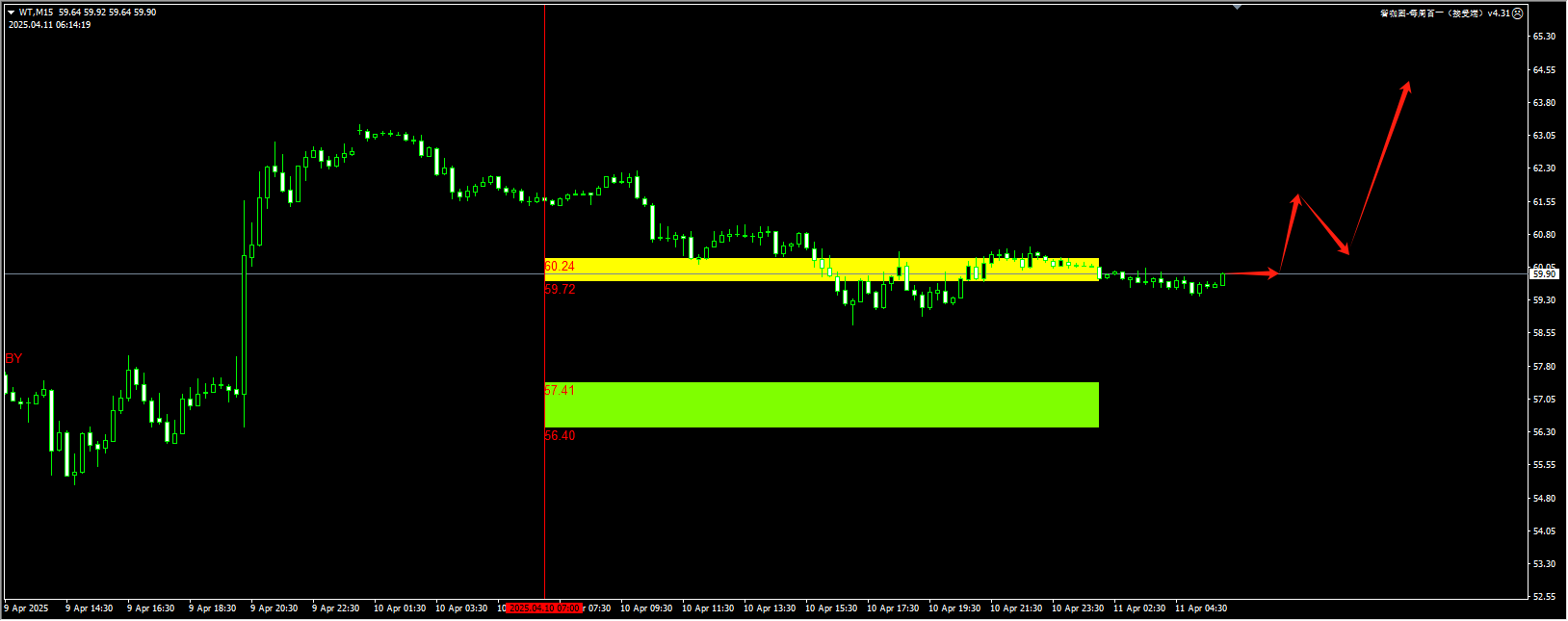 (Crude Oil 15-Minute Chart)
(Crude Oil 15-Minute Chart)
The plugin is updated from 12:00 to 13:00 every trading day. If you want to experience the same plugin as shown in the picture, please contact V:Hana-fgfg.
Today’s key financial data and events to focus on:
14:00 UK Industrial Output for February (YoY)
At 17:45, ECB President Lagarde delivered a speech at the press conference of the Eurogroup.
20:30 U.S. Producer Price Index for March (Year-on-Year)
22:00 Preliminary reading of the University of Michigan’s consumer sentiment index for April in the United States
22:00 James Bullard, President of the Federal Reserve Bank of St. Louis, will deliver a speech on the U.S. economy and monetary policy.
At 23:00, William, the president of the Federal Reserve Bank of New York, will deliver a speech on the economic outlook and monetary policy.
